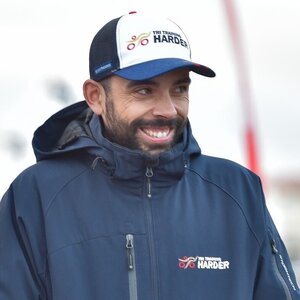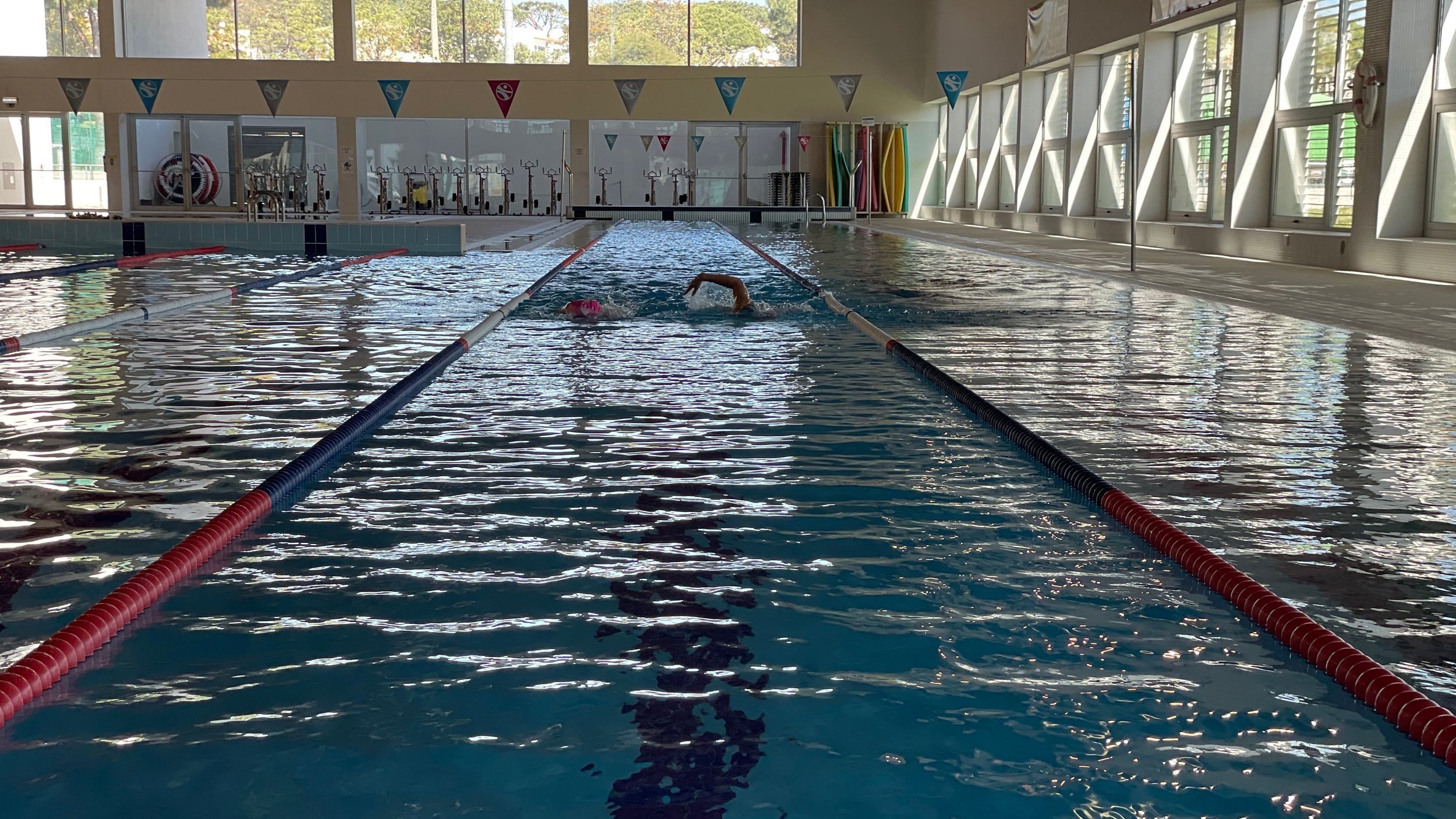Does the swimming pool length matter?
Swimming pools come in different shapes, sizes and characteristics, in this blog, Coach Diogo, answers one of the most commonly asked questions; which length of swimming pool is best?
Athletes always try to find the best facilities for their training: the best track, the best pool, the best roads, etc., but by searching for what’s best for them, there are always questions and doubts about what’s the most appropriate for their performance. It’s common for athletes to ask us what length of swimming pool is better for their training, and as usual, there isn’t a straightforward answer.
When considering this question, first, we need to analyse what types of swimming pools we have, as the length of it is not the only factor. We need to look at the depth, the number of lanes, lane rope type, water temperature and how the water is treated.
If your goal is to work on your technique, increase the number of times you practice your turns (Yes – triathletes can tumble turn! Check out Coach Jon’s article here) or want more rest each time you get to the wall, then a 25m swimming pool is the best choice for you.
A 25m swimming pool is excellent when coaching athletes who need more feedback on their technique, as it’s easier to stop, correct and analyse any changes made. Also, a 25m swimming pool is the best option to make sessions where the main goal is speed and short-distance efforts. There is a reason that the fastest times are in the 25m pool (short course). They are faster with quick turns.
If the session’s goal is to do endurance work, then a 50m swimming pool is the best option as the number of turns is reduced, and athletes must hold their stroke technique for longer before they get a micro-break at the wall. Knowing how good several athletes are at counting their lengths, a 50m pool makes it easier to stay on track!
On the other hand, 50m swimming pools can be pretty intimidating. The expanse of water you see in just one place can be a bit scary, and it can seem to take forever to reach the other side, which may be psychologically hard to manage. However, it is the best comparison for an open water venue where the buoy or the end of it seems never to get any closer.
We believe the best option is the most accessible one. If you can get to the perfect 50m swimming pool for endurance events, but it means you have twice the commute, it may make it harder to fit training in. We would rather see you swim in a less-than-ideal pool and do so more frequently than strive for perfection.
You may find that there isn’t even a choice of pool distance. Perhaps it is 15m, 20m, 33m, or maybe it is 90m…! If you live in the US, you will find the distances in yards. 25-yards (approximately 23m) or 50 yards (about 46m) may make you think you have become a swimming god or goddess if you don’t realise that it is a bit shorter! Nevertheless, would these stop you from getting in the pool, or would you just adapt to it? If it is meant to be 100m, swimming 99m won’t be the limiting factor. You have to make the call 150m may need to be longer or shorter depending on the 20m distance you choose. Perhaps this is for the best; you can adapt the session based on your daily variability of how you feel.
The swimming environment is more important than the pool length. There will be many different conditions when swimming in public pools: crowded lanes, cold water, and weak lane ropes. This may seem like a host of bad things about your swimming. However, they offer an opportunity to practice all the skills you need for your triathlon races: learning how to overtake, relaxing when being overtaken, changing your swimming technique for choppy conditions, and controlling your breath in cold water. Every session is an excellent opportunity to learn, and you’ll be more prepared when facing hundreds of swimmers in a race.
I once asked a very influential coach (you would know the famous British brothers he coached) the same question – what is the preferred lane length? His answer was fascinating.
He told me that when they were young, they used to swim in a 25m swimming pool where the lane ropes didn’t break the waves effectively. This made them work in challenging conditions and significantly improved their ability to swim in rough water conditions. Nowadays, when they swim in rough waters, they are very comfortable with it as this was their reality for years: practice makes perfect.
Perhaps the “best swimming pool” is an unattainable perfection that is a distraction. Maybe you need to consider if it is not the cause of your swimming slump. Having access to a swimming pool is a privilege. The fact you can easily swim in a safe environment is a win, and this is what matters the most. In the end, coaches will adapt the sessions to your needs; you just need to get to the pool.

Triathlon Coaching started for Diogo in 2010 when he was invited by Sporting Lisbon to start coaching the Triathlon School. Realising that coaching with only the level 2 wasn’t enough, Diogo decided complete his degree in Physical Education and Sports. While at University, Diogo started to coach at some training camps in the South of Portugal and was soon an integrated part of the coaching team for the Junior Portuguese National Team at both events and camps.
After completing his degree, Diogo was invited to join the Portuguese Triathlon Federation as the Coaching Development Director, organising several Coaching Courses and CPD’s.
At the same time, Diogo has been joined several High Performance athletes through World and European Triathlon Cups and Championships. In 2017 he did his Level 3 coaching qualification in Madrid, Spain giving him an impressive insight to the world of high performance sport and how to find the extra edge.
The experience gained at many levels of triathlon gave him a very understanding on how the triathlon world works as well as how to get the very best out of all athletes, from beginner to the very top level elite athletes.
Visit Diogo's
Coach profile
We’re here to help
Tri Training Harder are one of the leading Triathlon coaching providers in the UK, using our wealth of experience to unite scientific and technological research with already well-established and successful best practices, to create a formula for triathlon and endurance coaching that works.
The result is an honest, dynamic, yet simple new way of constructing an athlete’s training to allow them to reach their potential.
If you’re planning your next season, just starting out in the sport or are looking for extra guidance at the very top end of the field, we are here to help, and our coaches would be delighted to hear from you. You can contact us via the website, and one of the team will be in touch.

